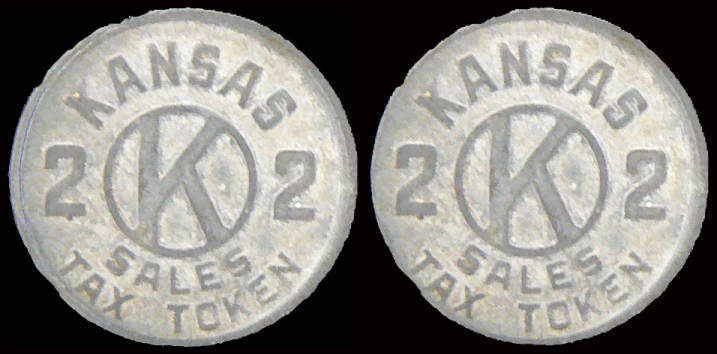Sales tax tokens were issued in Kansas as an early example of a cashless economy. In 1938, the state of Kansas issued 30.9 million two-mill tokens and 21.2 million one-mill mill ones as an early example of a cashless economy. By 1938, political pressure began to mount to eliminate the tokens. Governor Huxman called a special session of the Kansas legislature. A bill to ban the sale of sales taxes tokens failed to garner enough support.
In 1939, the Kansas legislature abolished the sales tax tokens. Initially, tokens could be redeemed for face value only after two years. After two years, any unused tokens were stored and used to support the war effort. The lack of popularity of sales tax-tokens in Kansas was explained by the state’s political pressure and merchant dissatisfaction. The law did not last, and Kansas became the first state to phase out the system.
Tokens were used to pay taxes in stores and public places. In some cases, the sales tax was a percentage of the total purchase price, or by the amount of tax you paid. Tokens were used to make up the difference. In the past, people were taxed more in stores that sold merchandise with a sales tax stamp. However, in recent years, the sales-tax token is no longer used.
In the early 1930s, some states imposed a two or three percent sales tax on goods. As prices fell, it became impractical to charge the public a tenth of a cent. To prevent this problem, twelve states began issuing sales tax tokens that were worth one-tenth of a cent. Each state had its own mill and issued a different type of token. In Kansas, the Kansas sales tax token was made of zinc and is commonly used in dime slot machines.
The Kansas Sales Tax Token: The First State to Ban Them

Sales tax tokens were first introduced in the early 1930s as a way for customers to pay sales taxes on their purchases. The state of Kansas was the first to ban these tokens after they were removed from use in 1939. This made the state the first to abolish their use. Today, sales tax tokens can be used at most retail establishments throughout the country. While they are not as common as they once were, they provide an easy way for shoppers to pay their sales taxes without having to worry about exact change. If you’re ever caught short at the checkout line, don’t forget to try using a sales tax token!
In the early days of sales tax tokens, Kansas introduced a two-percent sales tax. In 1937, Democratic Governor Walter A. Huxman signed a law that mandated that the tokens are made of metal and that they be printed by the Industrial Reformatory. The Kansas sales-tax token is the first state to have implemented such a policy. Its history is fascinating and has much to teach about the evolution of the state’s sales-tax policies.
In 1939, some states implemented a two-percent sales tax on goods. As prices fell, it was impossible to charge even a tenth of a cent. To make the sale tax work, twelve states issued sales tax tokens, each one worth a tenth of a cent and were used in the construction of many businesses. The resulting system has a history of more than a century.
The state of Kansas introduced a two-percent sales tax in 1937. The state’s democratic governor, Walter A. Huxman, made the law and the tokens. The sales tax statute required the state to use metal tokens that were made of zinc and were printed in the Industrial Reformatory. Those laws were the first steps towards the 2% sales-tax. By the early 1940s, the state imposed a two-percent rate.
In 1939, the Kansas legislature repealed the sales tax token. The tokens were worth a tenth of a cent. But with lower prices and rising inflation, the state did not have the money to charge a tenth of a cent to consumers. Therefore, the state issued a one-mill token after the two-mill token was rejected. Although this was a controversial decision, it was a good idea.
Sales tax tokens are not cheap. Some of them are worth a penny. They cost about ten cents each. While most are not valuable, some are worth over a dollar. If you want to buy a rare one, you should be willing to spend some money. The state issued sales tax tokens are not worth very much. If you find a good one, it is worth a few dollars.

For over 20 years, numismatics has been an integral part of my life. I’m an expert in the field, including research, grading, and analysis of data. I have written thousands upon articles about this subject. I continue to author reports and update price guides. I enjoy writing and sharing the passion and excitement of the hobby with veterans and new generations. I am analytical, precise, and highly disciplined. These traits have always helped me achieve outstanding results in my career.
